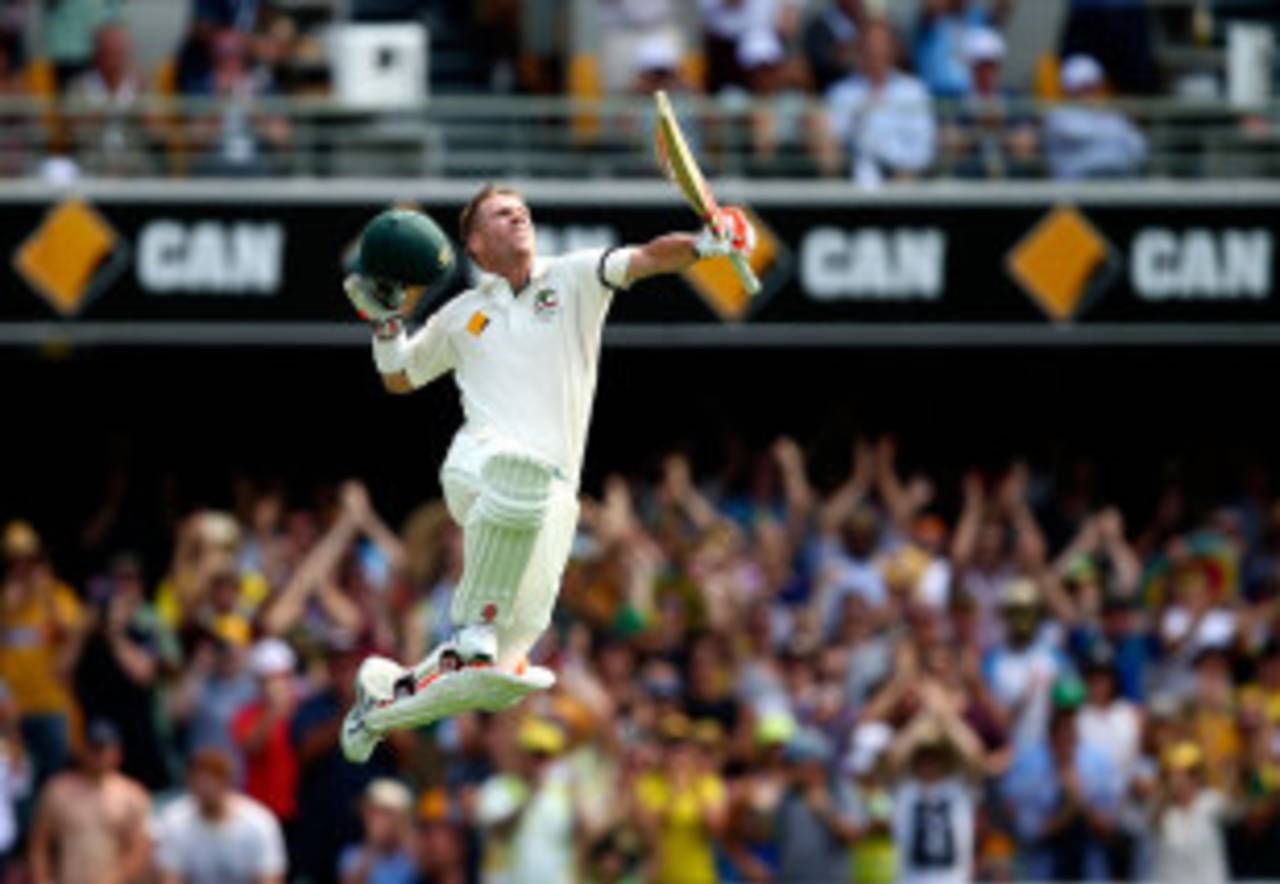At Brisbane, November 5-9, 2015. Australia won by 208 runs. Toss: Australia.
You could understand why people fancied New Zealand. Australia's new opener Burns had boshed a few one-day runs in the build-up. Steve Smith, their sole success at first drop since Ricky Ponting, was forced down to No. 4 by the return of Khawaja, a previous failure,
which in turn placed extra pressure on Khawaja himself. Voges was lucky to have made it to seven Tests. And Mitchell Marsh had not proved himself more than a bowling slogger.
Arrayed against this disorder were Southee and Boult, both of whom had spent most of the World Cup hooping the white ball into the stumps of defenceless batsmen. A muggy tropical morning, you imagined, and they might cause havoc. That remained in the imagination. For the first 20 minutes Southee bent a few, including one just past Burns's off stump. But, once that brief shadow passed, the pattern of so many Gabba Tests was imposed once more, as Australia chugged relentlessly to 556 for four, and New Zealand delivered lengths that made scoring simple.
As a batsman, if not always in his personal interactions, Warner the batsman likes to get off on the right foot. For the third home season in a row, he struck a century in Australia's opening match. And, for the second season in a row, he did it in both innings, joining Ponting and Sunil Gavaskar as the only batsmen to make twin Test tons on three occasions.
Until now, the longest innings of Warner's Test career had been 174 balls. Before the series, he had spoken about wanting to improve that. Here, he passed 200 balls for the first time. Burns made a confident 71 before edging Southee and, with 161 on the board, Khawaja
- in his first Test for more than two years - was granted easy passage. He lofted Craig's off-spin for two sixes from four balls, and had matched his previous Test best of 65 by the time Warner fell for 163. Khawaja's maiden century came to generous home ground applause just before stumps, with Australia's 389 for two the biggest first-day score at the Gabba.
Smith was bowled by some good left-arm swing from Boult next morning but, with Southee sidelined early in the day by a back injury, Khawaja and Voges added 157. Khawaja felt emboldened enough to reverse-sweep Williamson, but only provided a catch to point, provoking Smith's declaration with Voges on 83.
From Williamson to Williamson it went, New Zealand's No. 3 providing the only resistance after the long drag in the field. His 140 out of 317 was a Test knock of the finest standard, especially when the three below him mustered nine runs between them; it made him the first to pass 2,000 international runs in 2015. Latham's 47 and some low-order stubbornness were Williamson's main support but, his strokeplay was on another plane.
He started by flicking Hazlewood through midwicket and Lyon over it, before driving Johnson straight and pulling Marsh square. By stumps, he had 55. It was his work through cover and point that thrilled the most, the immaculate timing of each cut, late cut and drive, the way the ball flew from his bat to the fence. Analysts recorded his percentage of controlled strokes at 92, but that felt insultingly low. He made nearly a century in boundaries alone, and was caught behind only when the need to shield No. 11 Boult from Starc disrupted his rhythm.
With a lead of 239 and liberty to swing, Burns and Warner became the first Australian openers to put on 100 in each innings of a Test. Warner had now been involved in four successive opening stands of 100-plus, following 113 at Trent Bridge and 110 at The Oval, both with Chris Rogers; no team had ever boasted four in a row. The only other instance of a pair sharing two stands of 150-plus in a Test was by Paul Gibb and Eddie Paynter, who put on 184 and 168 for England's second wicket at Johannesburg in 1938-39. Burns reached his first century in Tests with two sixes in three balls off Craig under stormy skies that brought a brief interruption; Warner followed in a blaze of shots. Four slogged wickets before play ended meant little for New Zealand, but summed up a Test in which runs came at 4.17 an over - a record in Australia, at least until the West Indians arrived.
Set 504 on the fourth morning, New Zealand could opt only for a go-slow. Rain and bad light limited the day to 53 overs, as Latham stonewalled for more than an hour and a half, and Guptill for more than three. But they were prised out and, while Williamson batted as fluidly as his first attempt, he was adjudged leg-before to a ball from Lyon that the review showed would have been lucky to kiss the bail. It was two overs before tea, after which play was abandoned.
McCullum entertained everyone next day with a run-a-ball 80, as did last man Boult with his crane-kick batting: a bowler-puzzling method of exposing his stumps before blocking the ball while balancing on one leg, with movement across the crease in either direction, and occasional whacks for four through the line. Vaudeville stuff, but you couldn't help feeling flat at a finale played out in front of a few hundred people on a Monday morning, and at the contest that never materialised.
Man of the Match: D. A. Warner.
